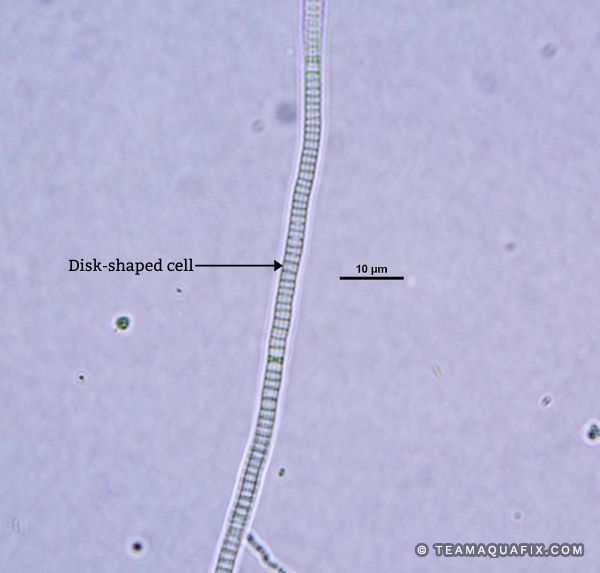
Type 021N can cause bulking when present in high abundance.
To treat Type 021N a nitrogen supplement, such as Accelerator 7, is recommended. Accelerator 7 is an amino acid-based organic source of highly bioavailable nitrogen. Increasing aeration to raise the oxidation/reduction potential in a wastewater system can help with control of this filament. If this is not possible, the addition of OxyFresh can assist in increasing oxidation/reduction potential to limit Low D.O. conditions.
Do not chlorinate Type 021N; this filament is very resilient to chlorination. Chlorination will frequently increase the filament’s abundance.
Because wastewater issues and the cause behind filaments can be complex, we recommend our Filament ID and Microanalysis. This not only confirms organism ID, but looks at biological indicators, plant design, and incoming substrates to decode your unique process.
Type 021N is a thick (1.6-2.5 µm) filament that ranges from 500-1,000 µm in length. This filament can cause bulking to occur. Type 021N can be identified under 1000x magnification by its disk-shaped cells. It has no attached growth and no sheath. Type 021N is Gram-negative, however, it can have Gram-positive granules. This filament is thought to fit in the Thiothrix genus, however, Type 021N does not readily store sulfur. Type 021N is also more closely associated with nitrogen deficient conditions. If Type 021N grows rapidly enough, rosettes are formed. Rosettes are when multiple filaments extend around the same center point, forming an asterisk-like shape.
A municipal wastewater plant in the Midwest that receives wastewater from three food companies was experiencing severe bulking and a slimy mixed liquor. They tried to treat the issues with chlorine. When this worsened the bulking, they submitted a sample to Aquafix Laboratories. When viewed microscopically, very few floc-forming bacteria were present but there was an abundance of Type 021N. By using chlorine, floc formers that normally outcompete Type 021N were being eliminated. This caused the abundance of Type 021N to increase due to its resilience to chlorination. This change caused the bacterial population in the mixed liquor to be almost entirely composed of Type 021N. Aquafix first recommended correcting the nitrogen deficiency. Ammonium nitrate was fed into the waste streams from the food facilities, and Accelerator 7 was used at the municipal plant. High amounts of incoming grease may have contributed to the municpal plant’s nitrogen deficiency. Qwik-Zyme L was added to ensure the grease was being fully broken down.
Eikelboom, D.H. & van Buijsen, H.J.J. (1983). Microscopic sludge investigation manual.
Jenkins, D., Richard, M.G., & Daigger, G.T. (2004). Manual on the causes and control of activated sludge bulking,
foaming, and other solids separation problems (3rd ed). CRC Press LLC.

39041 RGE RD 283,
Red Deer County, AB T4E 0M2
Phone: 1-888-466-0031 |
Fax: 1-888-507-9716
To place an order, please fill out the required fields below and proceed to checkout. Ensure all information is accurate, and feel free to contact our support team if you have any questions or need assistance. Thank you for choosing us!